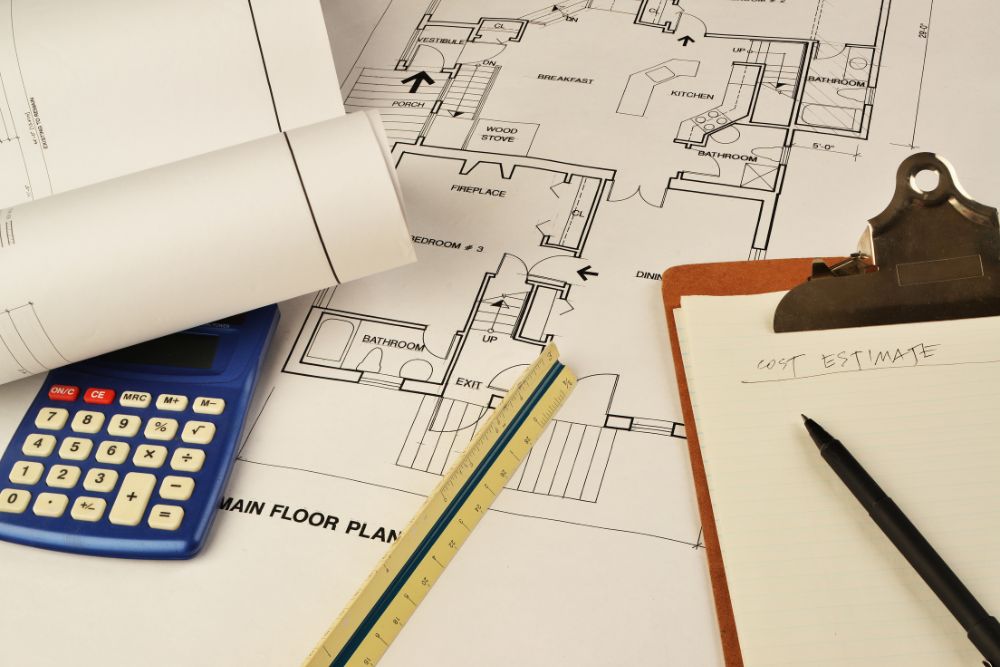Financing has become one of the biggest challenges in residential construction. Many homeowners are eager to start their projects, but hesitate when they realize the large upfront costs involved. For contractors, this often means spending time on estimates and proposals that don’t turn into real work.
At Prime Estimation, we understand how important financing is in turning ideas into real projects. The solution isn’t lowering prices; it’s offering flexible and accessible payment options. When contractors introduce financing early, clients feel more confident and ready to move forward.
By understanding how general contractor financing works, builders can close deals faster, take on larger projects, and build stronger relationships based on trust and transparency.
In this guide, we explain what general contractor financing is, how it works, the key financing options available, and how it benefits both homeowners and contractors.
What Is General Contractor Financing?
General contractor financing is a way for homeowners to pay for construction or remodeling projects through flexible payment options. The contractor doesn’t provide the money directly but connects the homeowner with trusted lenders or financing companies. These options are usually discussed early in the project and included in the estimate.
The goal isn’t to give free money, it’s to make it easier for homeowners to start projects they already plan to do. Whether it’s a $20,000 kitchen remodel or a $100,000 ADU, financing helps turn ideas into completed projects without delay.
When contractors offer or suggest financing options, they do more than build; they build trust. It shows clients that the contractor understands their financial needs, which often leads to higher approval rates, larger projects, and more satisfied customers.
Common Types of Contractor Financing Options
Contractor financing can come in different forms, depending on the lender and the homeowner’s needs. Here are some common options:
- Personal Loans: Homeowners can get unsecured personal loans through the contractor’s financing partner. These loans are fast to approve and don’t require home equity.
- Home Improvement Loans: These are designed specifically for renovations or remodeling. They often have lower interest rates and flexible repayment terms.
- Credit Card Financing: Some contractors offer credit card-based financing for smaller projects, where clients can pay over time with manageable monthly payments.
- Same-As-Cash Financing: This option lets homeowners pay later, often within 6 to 12 months, without interest if paid in full during that time.
- Deferred Payment Plans: Homeowners can delay payments until after the project is completed, which makes budgeting easier.
Benefits of Financing for General Contractors
When general contractors offer financing early in the project discussion, it makes the sales process smoother and faster. It helps clients make decisions quickly and gives contractors better control over timelines and cash flow.
Here are some key benefits for contractors:
- Faster Approvals: When financing options are part of the proposal, clients can apply and get approved right away. This reduces delays and helps projects start sooner.
- Bigger Projects: Financing allows clients to go for the complete project they want instead of cutting down due to budget limits. This increases the overall contract value naturally.
- Higher Close Rates: Estimates that include financing look more professional and trustworthy. Clients are more likely to choose contractors who make payments easier and transparent.
- Better Cash Flow: Many financing platforms pay contractors directly once the loan is approved. This ensures steady cash flow and reduces the wait for client payments.
- Stronger Market Position: Offering financing sets contractors apart from competitors. It shows professionalism, reliability, and customer focus, key factors that win more projects.
Benefits of Financing for Homeowners
For many homeowners, the hardest part of a project isn’t choosing what to build, it’s figuring out how to pay for it. Contractor financing makes this part easy by turning a large upfront payment into smaller, monthly installments that fit their budget.
Here are the main benefits for homeowners:
- Less Upfront Stress: Financing lets homeowners start their dream projects without paying the entire cost at once.
- Simple Monthly Payments: Fixed monthly payments make budgeting easier and give clients a clear view of their financial plan.
- Quick Approvals: With contractor financing, homeowners don’t have to spend days contacting banks. They can apply directly during the estimate and get fast approval.
- More Confidence: When contractors offer financing options, it builds trust. Homeowners feel supported and ready to move forward knowing they have flexible payment choices.
 How to Offer Financing as a Contractor
How to Offer Financing as a Contractor
You don’t need to be a lender to help your clients pay for construction projects. Your role is to make the process easier by connecting them with the right financing option at the right time. This builds trust and helps you close more deals faster.
Contractors can offer financing in two simple ways:
- Work with a financing provider
- Add financing options to project estimates
Both methods are effective. Many general contractors use a mix of these approaches based on the project type and client budget.
Option 1: Work with a Contractor Financing Platform
Many general contractors think financing is complicated, but today, it’s easy. Several online platforms connect homeowners with trusted lenders. You don’t need a license or to handle money directly; you just help clients apply.
Here are two good options:
Hearth
Hearth offers a quick way to present financing options to clients through email, QR code, or in the proposal. Homeowners can check rates from different lenders without affecting their credit score. Once approved, they receive funds directly and pay you as normal.
It’s fast, simple, and convenient. Clients can see real offers in minutes, and contractors can track approvals to keep projects on schedule.
Finance of America Home Improvement
This platform provides fixed-rate loans for home improvement, remodeling, and energy upgrades. Contractors apply to become partners and guide homeowners through easy financing steps.
It’s great for residential projects where cost might hold clients back. With clear terms and quick approvals, it helps projects move forward smoothly.
Option 2: Include Financing in Your Estimates
The best time to offer financing is during the estimating stage. When you show financing options in your proposal, clients see both the project cost and how to pay for it.
This saves homeowners from searching for their own loans and makes it easier for them to say yes. It also shows that you’re professional and care about their budget.
Modern estimating software makes this process simple. You can include detailed costs, payment schedules, and financing notes in one clear document. Clients understand the full picture, not just how much the project costs, but how they can afford it over time.
Tips to Improve Your Contractor Financing Options
Stronger credibility means better financing opportunities for both you and your clients. To qualify for the best financing partnerships and build trust with lenders, follow these simple tips:
- Maintain Strong Licensing and Insurance: Keep your contractor’s license and insurance current. Lenders prefer working with verified and insured builders.
- Keep Clean Payment Records: Maintain clear billing and payment histories. Consistent documentation shows you run a reliable and professional business.
- Build Partnerships with Lenders and Fintechs: Connect with local banks, credit unions, or online financing platforms. These relationships can open new opportunities for your clients and projects.
- Use Construction Management Software: Organized project data builds trust. Software helps track payments, schedules, and estimates, all key to managing financing smoothly.
- Present Financing Options Early: Don’t wait until the client asks. Include financing options in every proposal to make approval faster and easier.
FAQs
What is the Best Way to Finance Building a Home?
The best way to finance home construction is through a construction loan. It releases money in stages as the project progresses and can later be converted into a mortgage once the house is complete.
What is the Difference Between a Loan and a Contract?
A loan is money borrowed from a lender that must be repaid with interest. A contract is an agreement between two parties, like a homeowner and builder, that explains the work, cost, and responsibilities.
Why is a Mortgage Better Than a Loan?
A mortgage is usually better because it offers lower interest rates and longer repayment terms than regular loans. It’s designed for property purchases or construction, making payments more manageable for homeowners.
Why is a Home Loan the Best?
A home loan is best for buying or building a house. It offers low interest, flexible terms, and higher loan amounts, helping homeowners handle big expenses easily and complete their construction smoothly.
What is the Difference Between a Loan and a Contract?
A loan helps people borrow money to pay for construction, while a contract sets the rules and details of the work. The loan funds the project; the contract explains how it will be done.
Conclusion
General contractor financing is changing the way homeowners approach construction. It helps remove financial barriers and turns plans into real projects. When contractors offer financing early, clients feel confident, and projects move forward without delay.
For contractors, it’s more than a selling point; it’s a smart strategy that boosts close rates, improves cash flow, and builds long-term trust. For homeowners, it means flexible payments, less stress, and faster results.
At Prime Estimation, we help builders create accurate estimates that include financing options, helping clients say “yes” sooner.
Contact us today to make your proposals more powerful, close more deals, and turn every estimate into a successful build.


 How to Offer Financing as a Contractor
How to Offer Financing as a Contractor









